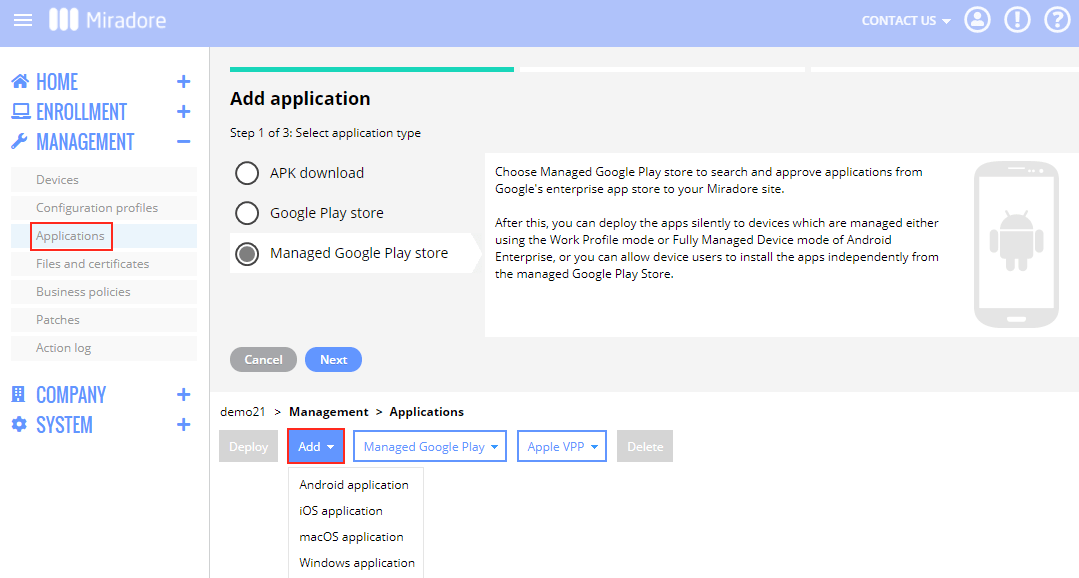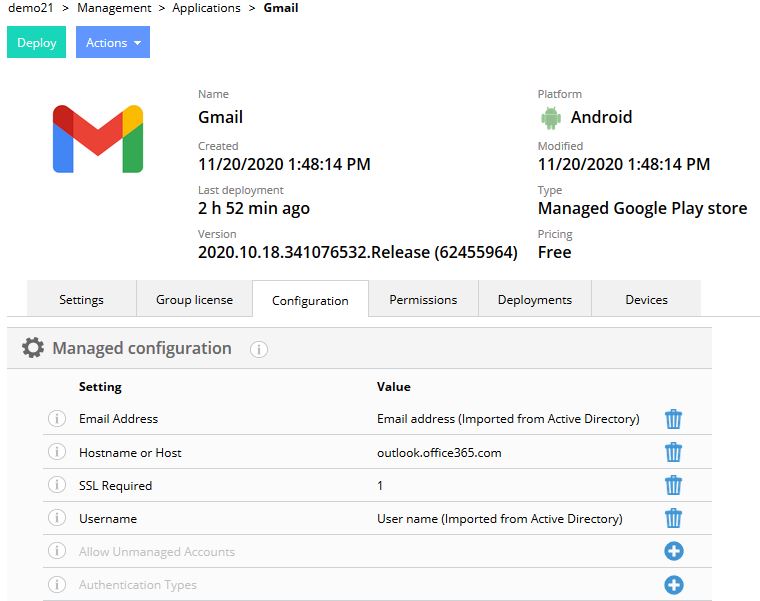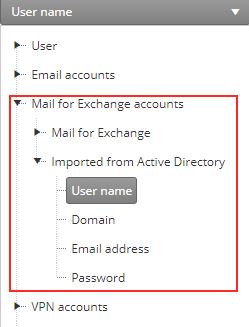This article covers how to configure Exchange email accounts to Gmail on Android.
Device users will receive the app ready for use. The only thing the device users need to do is to authenticate themselves when launching the app.
Limitations
- You can configure only one email account per managed app
Preparations
- You will need Miradore Premium Plan or active trial.
- You will need to have Administrator or Editor rights on the Miradore site.
- Managed Google Play Enterprise must be enabled and configured on the Miradore site.
- This method is applicable to devices that are enrolled using Android Fully Managed Device mode or Android Work Profile.
- There must be a web browser in the work profile/managed device if multi-factor authentication is enabled for Exchange.
Configuration Steps
- Go to the Management > Applications page in Miradore. Use the Add > Android application button to add the Gmail app to your Miradore site from the managed Google Play Store. For instructions, see How to Add Managed Google Play Applications.

2. Open the Gmail app's Configuration tab and define the following configuration keys:
-
- Setting: Email Address Value: This specifies the user's email address. It is recommended to use a variable from the drop-down list here.
- Setting: Hostname or Host Value: Enter here the hostname of your Exchange server. For example, "outlook.office365.com" for Office 365.
- Setting: SSL Required Value: Enabled (1). Check the check box. This setting is ignored if port 443 is used in the hostname.
- Setting: Username Value: Device owner's username. You can use a variable from the drop-down list.

Picture: You can add/remove configuration keys with the blue buttons.
You don't need to enter the usernames and email addresses to the User page manually if you import the data from Microsoft Active Directory or use a CSV file. See Importing user information from Microsoft AD or Importing users using CSV for more information.
If you import the usernames and email addresses from Microsoft AD, remember to use the variables imported from Active Directory for the configuration keys as shown in the picture below.
3. After you have configured the app, go to the Management > Devices page. Choose the desired devices and use the Deploy > Deploy application button to distribute the pre-configured email client app to the devices.
4. You can follow up on the deployment from the Management > Action log page, or from the Device page of each target device.
Troubleshooting
Usually, the app appears as preconfigured for the user and the user can start using the app by entering their password.
How to Re-apply the Configurations
Sometimes, however, the configurations won't affect immediately after the app was deployed. In that case, you can try to reapply the app configurations using the Actions > Apply application configurations and policies button which is located on the Gmail application page. This button can also be used to deploy configurations after changing them.
Check the Variable Sources from User Pages
If the account does not seem to appear on the device, check the device user's User page in Miradore. Make sure that the selected email address and user fields are correctly configured for the user in Miradore.
MFA Enabled, but Browser Missing
Gmail app shows the error "Can't connect to the server. Try re-entering your password, or contact your IT admin for more information". This error can occur if multi-factor authentication (MFA) has been enabled for the Exchange account, but there is no compatible web browser available for completing the authentication.
You can solve the problem by deploying a browser to the managed device/profile. We have tested that the deployment of a managed Chrome or Firefox app solves the problem.
Have feedback on this article? Please share it with us!
Previous Article:
« Configuring Google Chrome for Android devices using managed app configurations
Next Article:
Configuring Exchange for Gmail on Android »


